Sri Lanka: 5 Extraordinary National Parks to Explore
The small island nation of Sri Lanka has a remarkable diversity of landscapes, home to 26 national parks. Nomad Sarah shares some of her favorite places to spot leopards and elephants, snorkel with dolphins and turtles, and hike to spectacular views.
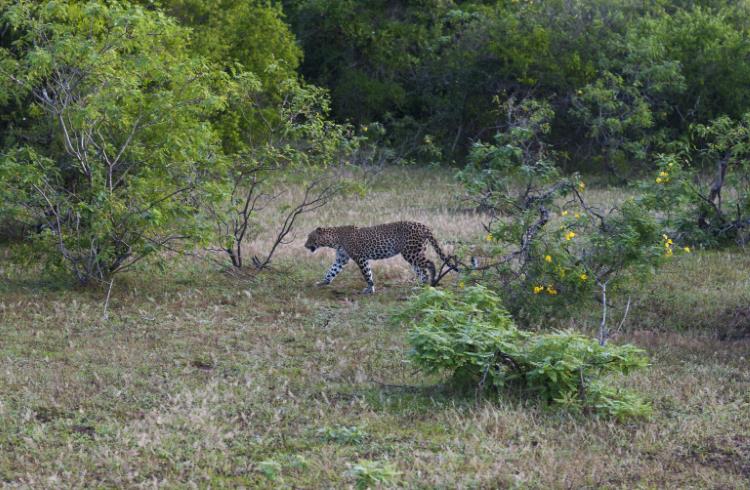 Photo © Getty Images / uba-foto
Photo © Getty Images / uba-foto
- Yala National Park
- Wilpattu National Park
- World’s End at Horton Plains
- Adam’s Bridge National Marine Park
- Minneriya National Park
- Trip notes
Yala National Park
With a savannah-like microclimate and bulbus tree trunks, it’s not surprising that Yala National Park has the highest concentration of leopards in Sri Lanka. It seems like perfect leopard territory – every rock, and every movement in the bushes makes me hold my breath in anticipation. Though Sri Lankan leopards are extremely rare, they’re the biggest draw at Yala. And when Mattala International Airport opened in 2013 (only 40 minutes away) making southeastern Sri Lanka easily accessible, rather than a long road trip from Colombo, Yala saw a sudden boom in popularity.
It’s quieter during July to January due to monsoon season (excluding September, when it closes for maintenance). If the water levels are high, wildlife is more dispersed and can be harder to spot, but if the monsoon is lighter than normal, you may have a better chance.
Hiring eco guides in Yala
Sometimes even the most independent traveler needs a guide, and this would be one of those times. The local guides are extremely experienced in tracking the well-camouflaged leopard population. They’re also well-versed in animal behavior – let’s not forget leopards and elephants could do you some damage, so a self-drive tuk-tuk isn’t the safest way to see them. You need a driver in something substantial like a Jeep – US $60 (LKR 12,065) full day, with guide.
The downside is some people, including even some guides, drive too fast around the park, which occasionally can lead to animals being struck and killed. Consider asking them not to focus so hard on finding leopards. There’s plenty of other wildlife in this remarkably diverse landscape, such as Bengal monitor lizards, mugger crocodiles, water buffaloes, langur monkeys, and maybe the occasional ruddy mongoose. The birdlife is also abundant, including green bee-eaters and crested serpent eagles.
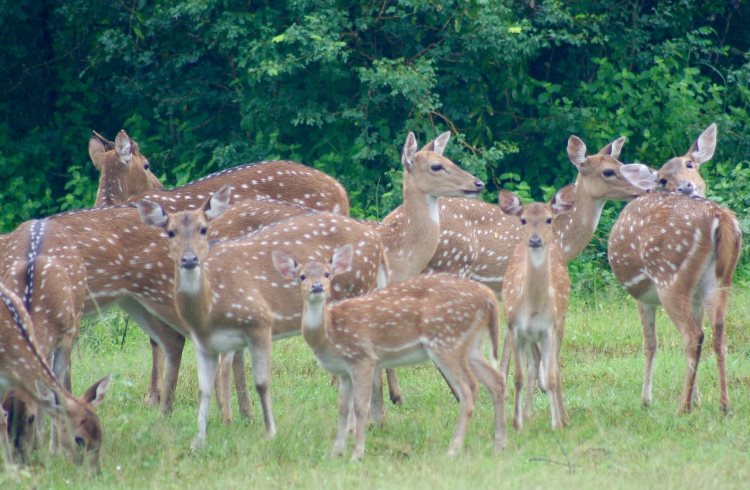
The official website has a lot of useful info on how to visit responsibly (and how to report any inappropriate behavior). Tickets are US $15/day (LKR 3,015/day) and it includes an option to book a full or half-day Jeep tour with approved guides.
Wilpattu National Park
Wilpattu National Park is less well-known than Yala, despite being the largest national park and one of the oldest in the country (established in 1938). Like Yala, it’s renowned for its leopards. I was fortunate enough to see one feasting its eyes upon a spotted deer from a thicket at sunset. However, it’s easier to get to than Yala as it’s on the west coast, not far from Anuradhapura. A 2015 survey by the Wilderness and Wildlife Conservation Trust photographed around 50 leopards in the park, but again, remember leopards are just the icing on the cake. You might see a sloth bear, and you’ll certainly see some magnificent scenery.
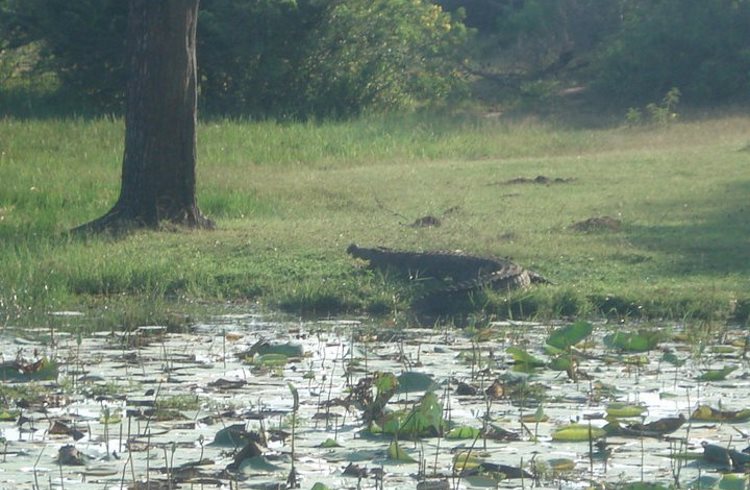
The most striking feature is the large number of sand-rimmed lakes formed by rainwater filling large depressions in the ground. As such, this 508mi2 (1,317km2) park is jam-packed with crocodiles and water buffaloes, reptiles such as monitor lizards, Indian pythons, and turtles, and wetland birds such as black-headed ibis, egrets, herons, and spoonbills. The lakes and tanks (reservoirs) also attract lots of elephants. Only 25% of the park is accessible to visitors, making it an incredible conservation area.
The most popular time to visit is February to October, during the monsoon. As with Yala, it’s safer and more responsible to search online for an eco-tour. Park entry is US $15 (LKR 3,015) and guided tours cost around US $100/LKR 21,000 (half day) to about US $130/LKR 26,140 (full day). A full day offers a better chance of seeing everything you want, although if you plan for two, it takes some of the pressure off the guide.
World’s End at Horton Plains
For breathtaking scenery and hiking, World's End at Horton Plains in Uva Province is where to go. This verdant hike in Sri Lanka’s Hill Country brings you to a sheer cliff edge with 4,000ft (1,219m) drop. On a clear day, peaks, plateaus, and panoramas await you, peppered with tiny villages and maybe a glimpse of the sea 50mi (80km) away. It really does feel like you're standing on the edge of the world.
If you visit in the afternoon, or during April-November, you’ll be confronted by a wall of mist and cloud swirling in the void right in front of you – but this can make for a dramatic experience, too.
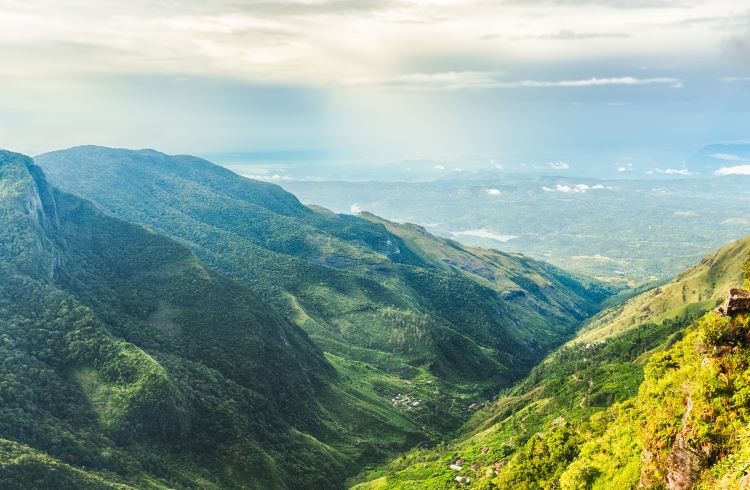
Horton Plains is a plateau, so the hike is not too challenging. The trail to the cliff is only 2.4 mi (4km). On the way back, the trail loops around to the impressive 65ft (20m) Baker’s Falls. The waterfall is just 1.2 mi (2km) down the trail from World’s End, then it’s only 2.1mi (3.5km) back to the trailhead. This 5.9mi (9.5km) circuit can be easily completed in three hours.
Bring waterproof clothing and warm layers, because Hill Country can be cold and damp, with sudden showers. But wear a t-shirt underneath because it can heat up quickly if the sun emerges. Warm yourself with a fortifying flask of milk tea from local tea plantations or ask your guesthouse to give you a packed breakfast.
Entry is US $25 (LKR 5,025) and a guide is just US $4 (LKR 800) – if you’re a solo woman you may want to hire one for safety or make friends at your guesthouse/hotel to go with, as some have reported feeling unsafe.
There are no guard rails at the precipice and there have been a few accidents so take care near the edge and don’t leave the path.
Adam’s Bridge National Marine Park
This stunning park in the Gulf of Mannar bears more than a passing resemblance to the neighboring Maldives islands. It’s named after the famous former land bridge between India and Sri Lanka – the stuff of legends linked to Adam being cast out of the Garden of Eden and walking across the bridge to get to India. It’s also at the center of a debate over whether it’s natural or man-made.
It seems many people used to use “Rama Setu” to get between the two countries before it was submerged over 600 years ago. You can still walk from Mannar Island across some of the sand dunes, but don’t try to wade the full 18mi (30km) to India unless you want to be detained as an illegal immigrant!
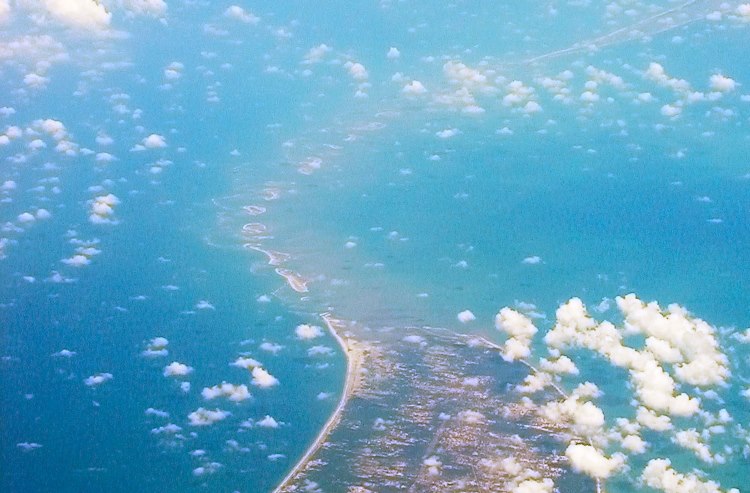
The extremely shallow turquoise waters (just 1-10m/3.2ft-32.8ft) attract all kinds of species including dolphins, porpoises, dugongs, and sea turtles. Snorkeling adds another dimension to the experience. Since the park isn’t very developed, hire snorkel gear from Mannar Island. In the clear waters with patches of seagrass, I spotted turtles and two dolphins. Take care not to stand on the coral as it kills it.
The waist-deep water is also a popular kitesurfing spot, or it’s possible to hire a boat from Mannar Island to view the bridge from the water
Minneriya National Park
If you’re visiting the Cultural Triangle and want to find a worthwhile national park nearby, Minneriya in the North Central Province is worth the visit. It’s most notable for attracting a few hundred elephants during dry season, the largest recurring Asian elephant gathering in the world – at times, up to 700 have assembled. They migrate from Wasgamuwa National Park annually in search of food and water. The lush land at Minneriya sustains them, along with enormous flocks of little cormorants, which add to the spectacle.
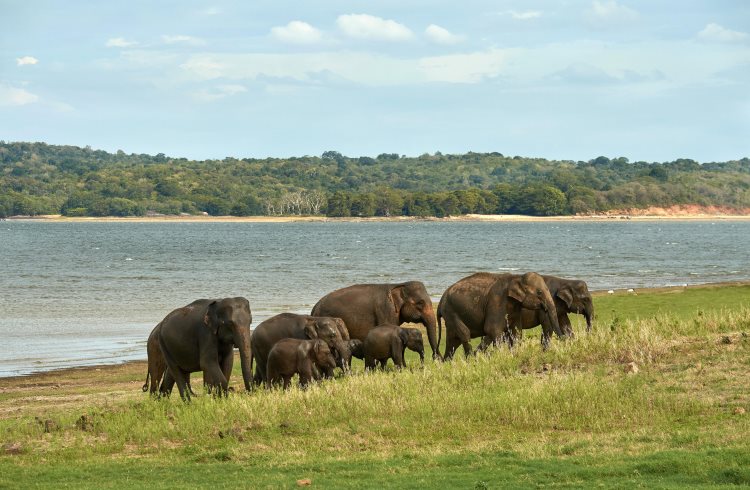
Mammals including playful, purple-faced langurs and toque macaque as well as sambar deer and Sri Lankan axis deer also live here, and reportedly, rare species such as leopards, sloth bears, and even gray slender loris have been sighted. As you may have guessed, crocodiles live here too, so don’t get too close to the water, no matter what you’re told about local crocs.
The Minneriya tank was built in the 3rd Century by King Mahasen. It was created by blocking the river with a 1.2mi (2km) long, 42ft (13m) high dam and can hold up to 20 billion gallons of water – quite the engineering feat.
A few of the elephants here are known to be aggressive due to negative encounters with humans such as being shot at or hit by vehicles. So again, an eco-tour is usually safer than a hire car, and definitely don’t try it on foot. Entry is US $15 (LKR 3, 015) and eco tours are around US $40/LKR 8,045 (half day) to $60/LKR 12,065 (full day).
Trip notes
Bring binoculars – guides do their best to bring you close but leopards are hard to spot (pun intended.)
If you can get one, bring a zoom lens to make the most of your safaris.
Underwater camera housing or a GoPro is useful for the Marine Park. Just don’t risk cheap housing.
Always wear sunscreen and bring extra sunscreen with you – you’re very close to the equator here.
In the dustiest areas (such as Yala) you’ll be covered in red dust by the end of the tour so don’t wear your favorite clothes.
Related articles
Simple and flexible travel insurance
You can buy at home or while traveling, and claim online from anywhere in the world. With 150+ adventure activities covered and 24/7 emergency assistance.
Get a quote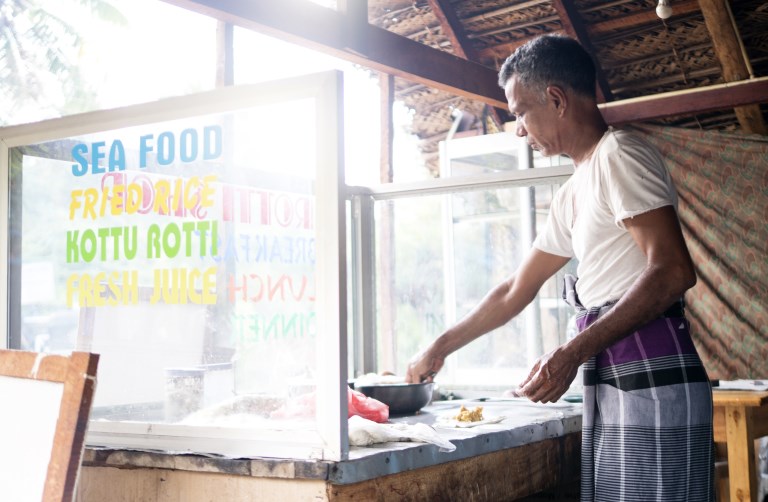
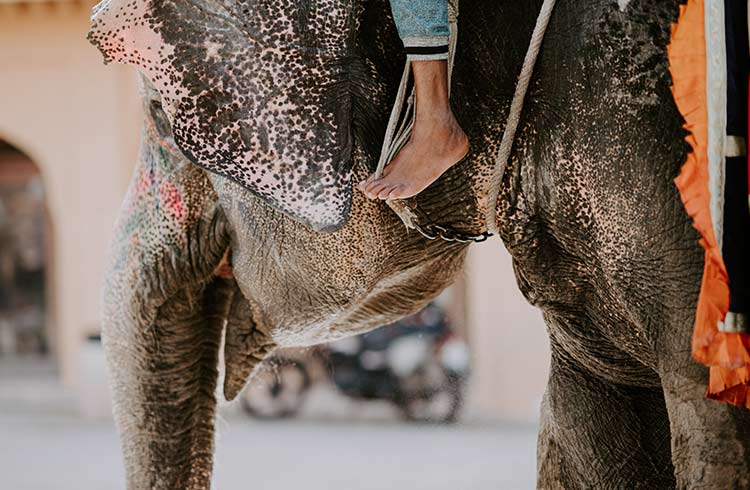

No Comments